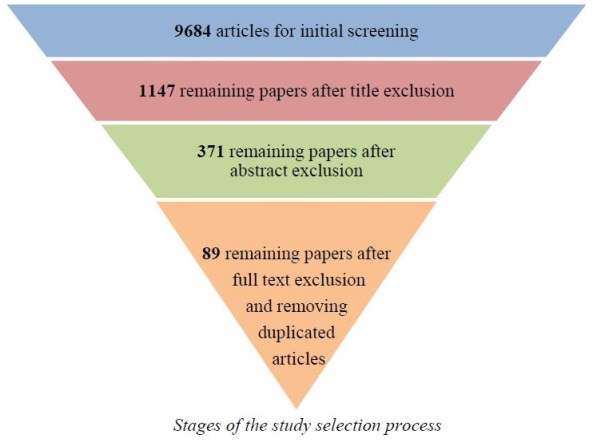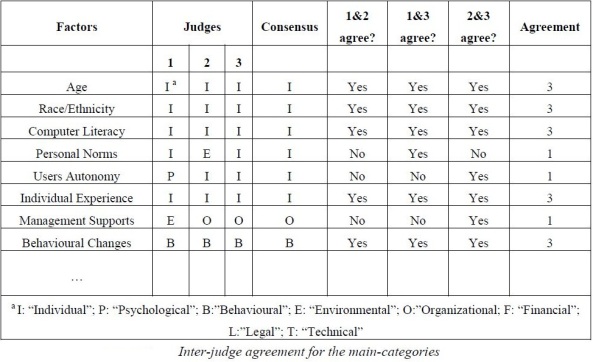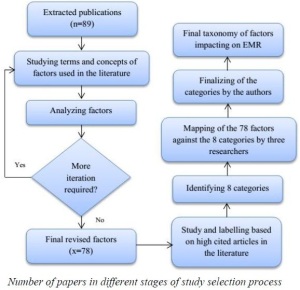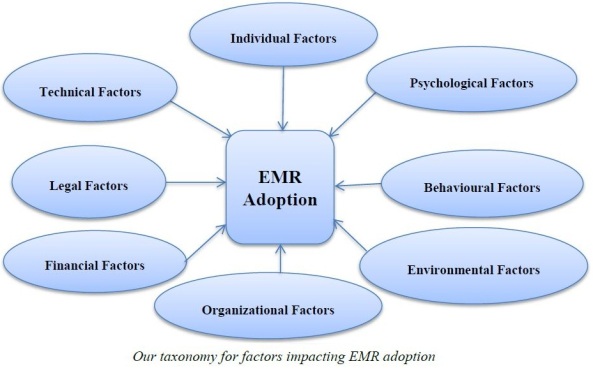Wow! It has been at least six months since I’ve last posted a blog here. I kinda missed it. Haha. When things get less toxic, I might do this more often. Anyway, as a requirement for MI 227 (Clinical and Laboratory Information Systems) for this week, I have to post a blog about an article describing the adoption of a Clinical Information System, Laboratory Information System, or any system related to it. Initially, I’ve thought about sharing my Research Output from another subject, which is HI 299 (Research Methods in Health Informatics). However, I opted using it to support my article here in the Philippines.
My chosen article is entitled “Antecedents to the User Adoption of Electronic Medical Record”, a study done by Mohammadreza Najaftorkaman and Amir Hossein Ghapanchi – both from Griffith University in Queensland, Australia. In a nutshell, they talk about that EMRs are perceived (and should be able) to provide benefits to healthcare providers and even the health population, and the main confirmation into having evidence that EMRs are used to its full potential is when we have a documentation of its adoption. However, they have noticed that there is a lack of research when it comes to a comprehensive taxonomy regarding the factors to EMR user adoption. Thus, their study aims to conduct a systematic literature review to extract different factors leading to EMR user adoption. After their systematic literature review, they have identified eight main categories of EMR user adoption – namely (1) individual, (2) psychological, (3) behavioral, (4) environmental, (5) organization, (6) financial, (7) legal, and (8) technical. The taxonomy they have identified is a step towards many more studies on determining the factors towards EMR user adoption.
DETAILS OF THE STUDY:
Introduction and Review of Related Literature
One of the main reasons why they made this study is because there were researches that suggest the benefits of EMR in healthcare. However, there were studies as well suggesting that EMRs have not been adopted as expected. Upon searching through different studies about EMR user adoption, they found only two systematic reviews. None of those two studies made a complete model of the factors affecting EMR adoption.
The two systematic reviews they have obtained are the following: (1) “Barriers to the Acceptance of Electronic Medical Records by Physicians from Systematic Review to Taxonomy and Interventions” by Boonstra and Broekhuis (2010) and (2) “A Knowledge-Based Taxonomy of Critical Factors for Adopting Electronic Health Record Systems by Physicians: A Systematic Literature Review” by Castillo, Martinez-Garcia, and Pulido (2010). Here is the summary of the difference of both systematic reviews.
Methodology
As I have mentioned above, they have used a systematic literature review to carry this study. Specifically, they used this framework for carrying out the review – (1) planning the review, (2) conducting the review, and (3) reporting the review.
In implementing this systematic literature review, they looked into nine databases with keywords using EMR adoption. They used three main categories for searching terms related to EMR user adoption – (1) EMR concepts, (2) adoption terms and definitions, and (3) impact terms. They only included English-language articles, papers focusing on EMR/EHR only, and papers focus on factors affecting adoption of EMR/EHR systems when accepting papers for review. The image below summarizes the process they did in qualifying the research papers they have collected.
After selecting the qualified papers, they studied the terms and concepts of factors in the literature, analyzed them, and listed the final factors – narrowing down the factors to 78. After that, they categorized these factors into clusters to create a comprehensive taxonomy. They established those categories based on other EMR literature’s terminologies with a high citation rate using the Publish or Perish software. For example, the “environmental” label is based from Ash and Bates’ article (2005) having a citation number of 317. After narrowing down the factors and establishing the eight categories, they then presented these to three researchers specializing in health informatics as a validation process. These researchers were given instructions to map the factors to the eight categories. The partial output of this process can be seen below.
You can also summarize the categorization process in this figure as well.
Results
Personally, one of the notable information I noticed in the result of their study is the distribution of the papers in different continents. It shows that 82% of the papers came from the North America and Asia being second with 9% only. I personally think that there should be more studies needed to be done in order to possibly make the study more unbiased.
The image below shows their framework for the factors to EMR User Adoption. Since the factors are 78 in number, I opted out on putting it here in the blog. 🙂 I’ll give you a link to the study at the end of the blog.
Lessons Learned:
- In the research point of view, this study could provide a benchmark towards assessing EMR implementation into what factors made the success and/or failure of an institution into adoption of EMR. However, they only used two reviews as basis for back up the study and these two studies have not provided a detailed analysis of the factors.
- Najaftorkaman and Ghapanchi also noted that there is a lack of research on the behavioral factors into EMR adoption (only around 3%).
- Majority of the selected studies for systematic review had been from the North America (around 82%). Meaning, there is a bias in one way or another in determining the main categories for the factors. There should be more studies coming from other continents as well.
- Establishing the eight categories for the factors to EMR adoption, different stakeholders could be involved in making sure that such factors could be addressed even in the planning phase of the EMR implementation.
- Najaftorkaman and Ghapanchi also discussed that EMRs should focus on customization, ergonomic considerations, and portability of running an EMR application.
Relation of the Study in the Philippines:
One of the things I’ve learned in this study is that there are EMR User Adoption is multifactorial. There are many elements that we have to consider even when the EMR that is to be used is of good quality. I have personally experienced the struggle of letting the doctors (primary users of our EMR) get into using an EMR application completely. Even with support from the management, there is still resistance to change.
Like in the “Research Study” I have made, which is entitled “Factors Influencing the Use of MDPortal System in Documenting the Clinical Discharge Summary by First Year Residents”, my factors had not been properly mapped into proper categories. Since there has not been an established criteria for determining the factors for EMR user adoption, there may have been other factors not taken into consideration when I did the study. But basically, the main factors into resistance of EMR usage is under the “Organizational Factors” – doctors handling too many patients and patients should come first – and also possibly “Technical Factors” – accomplishing an EMR takes a lot of time.”
Lastly, it also implies that there had not been any studies in relation to EMR user adoption in the Philippines which could help define the factors into using the EMR.
Ending my very lengthy blog post, I would just like to say that change is inevitable, change is permanent, and change is all around us. EMR user adoption is multifactorial and we need to consider all angles as possible. Thanks for reading! 🙂
References:






